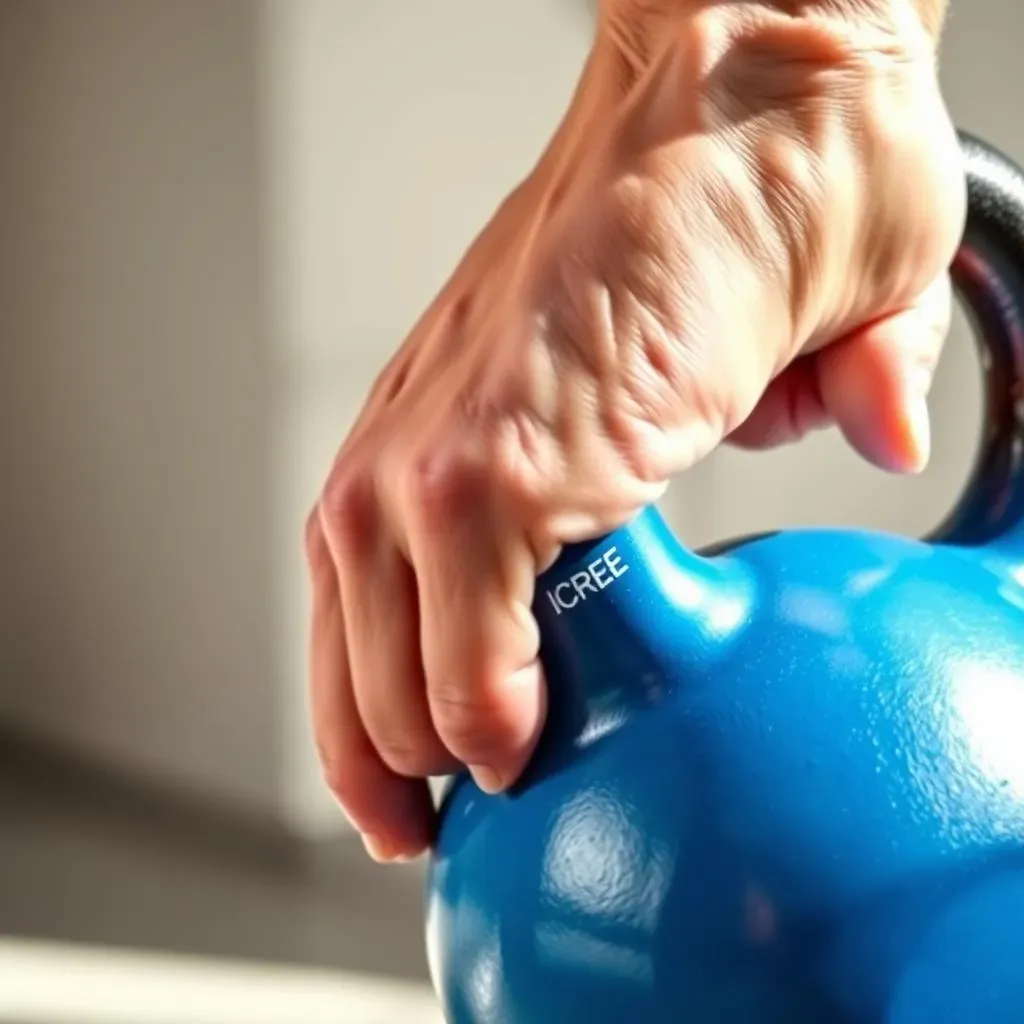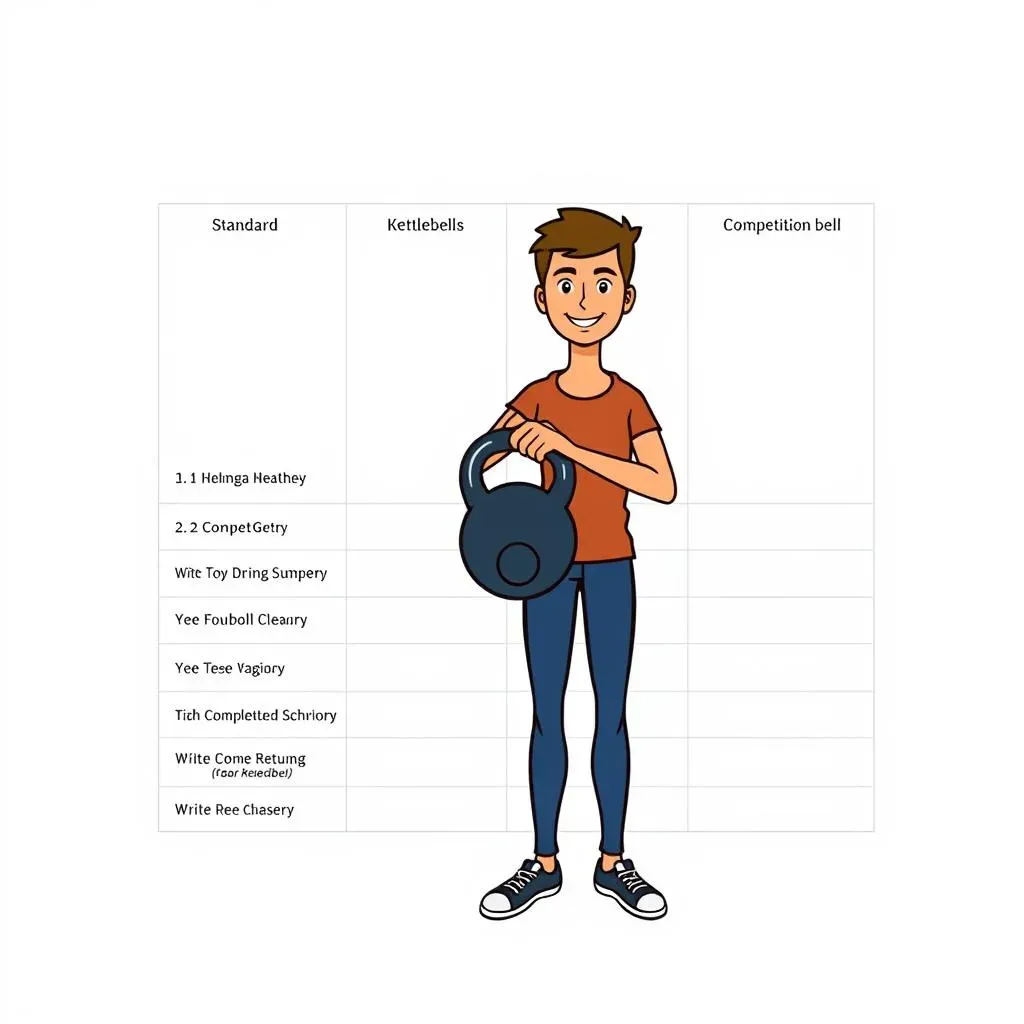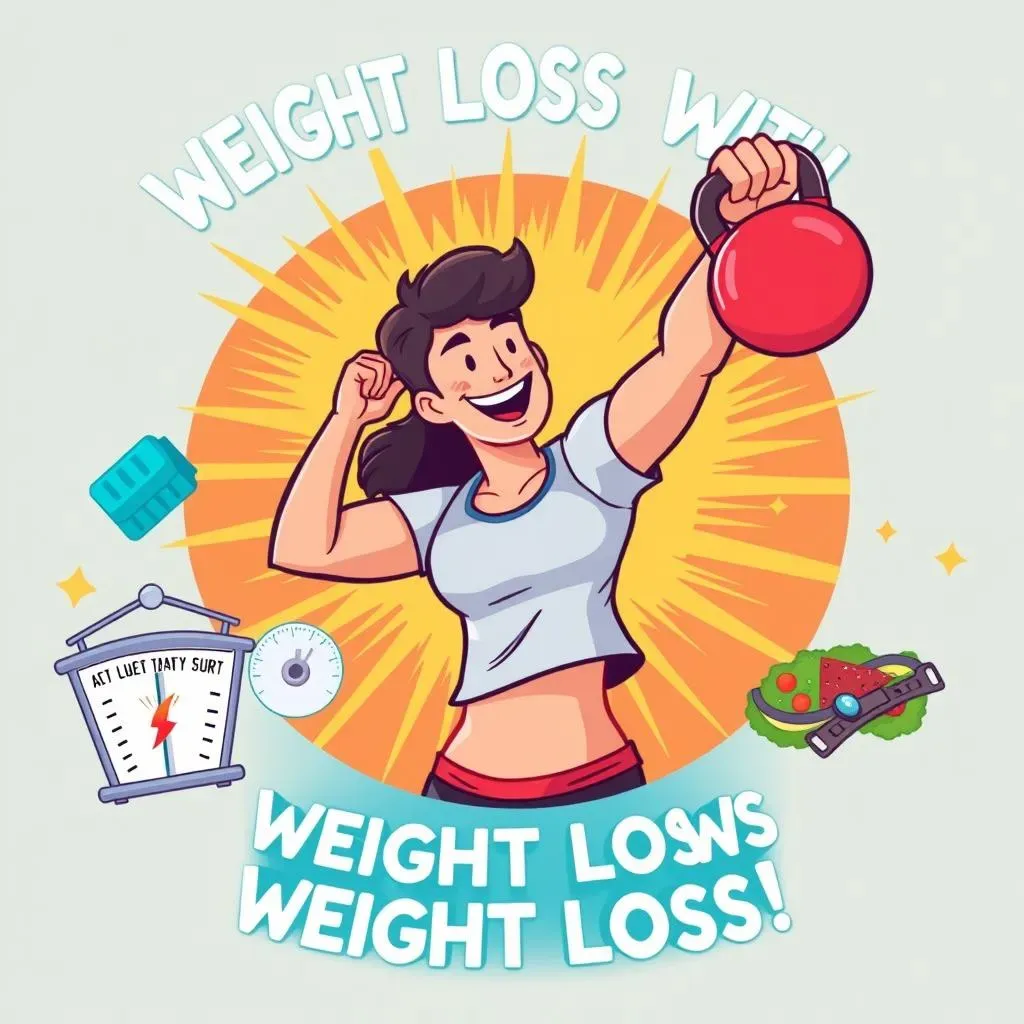Table of Contents
Ever looked at a kettlebell and thought, "I could totally swing that… maybe?" You're not alone. Many people see these cannonball-looking weights and wonder where to begin. If you're searching for the best kettlebell workout for beginners, you've landed in the right spot. This isn't about becoming a kettlebell master overnight, it's about starting smart and building strength safely. We'll break down the basics, like how to hold a kettlebell without launching it across the room, and introduce six essential exercises that'll get you moving. Forget complicated routines; we're talking about a simple, effective 20-minute workout you can do almost anywhere. We'll also chat about what type of kettlebell to grab and how heavy it should be, plus, we'll touch on how these workouts can help if you're looking to lose a few pounds. So, ready to get started? Let's jump in and get swinging!
How to Hold A Kettlebell

How to Hold A Kettlebell
The Grip: It's All About the Handle
Okay, so you've got this cannonball with a handle. First things first, forget about gripping it like you're trying to crush a soda can. A good kettlebell grip is firm but not overly tight. Think of it as shaking someone's hand – you want a solid connection, not a death grip. Your fingers should wrap around the handle, with the bell resting mostly on the heel of your hand and not too high up in your palm. If it’s too far up, it can be uncomfortable and make movements awkward and unstable.
Imagine you're holding a suitcase; that's the kind of grip we're aiming for. You want to feel in control, but not tense. A common mistake is to squeeze the handle too hard, which can tire your forearms quickly. So, keep it firm, but relaxed. This will allow you to maintain control throughout your exercises.
Hand Placement: Finding Your Sweet Spot
Now, let’s talk about hand placement. The goal is to find a spot on the handle where the kettlebell feels balanced and secure. If you have big hands, you might need to adjust your grip slightly to find that sweet spot. The handle should sit comfortably in the center of your palm, rather than digging into your fingers or wrist. A good way to practice is to simply hold the kettlebell in front of you, letting it hang naturally. If it feels wobbly, adjust your grip. If it feels solid, you’ve found your spot.
It's also super important to keep your wrists straight. Bending at the wrist can lead to discomfort and potential injuries down the line. Focus on keeping your forearm in line with the kettlebell handle, creating a straight path from your elbow to the weight. If you feel your wrist start to bend or buckle, you need to adjust your grip or the weight is too heavy for you. Remember, it's all about control and stability, not brute force. Take your time to get this right, and you'll be setting yourself up for success.
Grip Type | Description | Common Mistake |
|---|---|---|
Standard Grip | Firm, relaxed grip, like shaking hands. | Gripping too tightly. |
Hand Placement | Handle sits in the center of palm. | Allowing the weight to dig into the wrist. |
Wrist Position | Straight wrist, aligned with forearm. | Bending or buckling the wrist. |
The 6 Best Kettlebell Exercises for Beginners

The 6 Best Kettlebell Exercises for Beginners
1. The Kettlebell Deadlift: Your Foundation
Alright, let's kick things off with the kettlebell deadlift. It's like the granddaddy of kettlebell exercises, and a total must for beginners. Think of it as picking up a heavy box, but way cooler. You'll start with the kettlebell on the floor, standing with your feet about shoulder-width apart. Bend at your hips, keeping your back straight (like a plank), and grab the kettlebell handle. Then, stand up, pushing through your heels and squeezing your glutes at the top. It's not a squat, so you're not dropping your hips way down; instead, you're hinging at your hips, keeping your back straight, and your core engaged.
Why is this so important? Because it teaches you how to lift with your legs and hips, not your back. This is crucial for preventing injuries and building overall strength. It's also a full-body move, meaning you're working your legs, glutes, back, and even your grip. Start light, focus on your form, and slowly increase the weight as you get stronger. You're learning a movement pattern that will serve you well in all your future kettlebell adventures, so take your time and nail it!
2. The Kettlebell Goblet Squat: A Squat with Style
Next up, we've got the goblet squat. Now, if you're familiar with squats, this is like giving them a fancy upgrade. Instead of just squatting down with nothing, you're holding the kettlebell close to your chest, like you're cradling a baby. This changes the game by engaging your core and upper back more. Start with your feet shoulder-width apart, hold the kettlebell by the horns (the sides of the handle) close to your chest, and squat down as if you're sitting on a chair. Try to get your thighs parallel to the floor, keeping your chest up and your core tight. Then, stand back up.
The goblet squat is great because it forces you to maintain good posture. The weight in front of you acts as a counterbalance, helping you keep your back straight and your chest up. This is super beneficial for building leg strength and improving your squat technique. It also helps with overall stability and coordination. If you're feeling wobbly, that's a sign you might need to work on your core strength. Like with the deadlift, start with a weight that feels manageable and focus on your form. Good form will help you progress faster and safer.
Exercise | Primary Muscles Worked | Beginner Tips |
|---|---|---|
Kettlebell Deadlift | Hamstrings, Glutes, Back | Hinge at hips, keep back straight. |
Goblet Squat | Quads, Glutes, Core | Hold bell close to chest, maintain upright posture. |
What Type of Kettlebell Is Best? What Is the Best Kettlebell Weight for Me?

What Type of Kettlebell Is Best? What Is the Best Kettlebell Weight for Me?
Standard vs. Competition Kettlebells: What's the Deal?
Alright, let's talk kettlebells. You'll see two main types floating around: standard and competition. Standard kettlebells are like the classic, old-school variety. They're usually made of cast iron and have a thicker handle. The size of the bell changes as the weight changes, so a 10lb bell will be smaller than a 20lb bell. Competition bells, on the other hand, are all the same size no matter the weight. They're also made of steel and have a more consistent handle size and shape. This is to make sure that no matter the weight, the feel of the bell is always the same, which is important for advanced moves. For beginners, either one is fine. I personally like the competition bells because I can use the same technique with different weights, but a standard bell is totally okay to start with. The most important thing is to get moving. Don't get caught up in the details too much at the beginning.
Think of it like buying a guitar. You don't need a top-of-the-line model to learn the basics, right? A solid, reliable guitar will do just fine, and the same goes for kettlebells. Both standard and competition kettlebells can get you strong and fit. It really comes down to personal preference and budget. If you plan to get really into kettlebells, competition ones are the way to go, but if you just want to see what it's all about, a standard one works just fine.
Finding Your Starting Weight: It's Not a Race
Now, the big question: how heavy should your kettlebell be? This is not a test of strength, so don't try to be a hero right away. For most beginners, I usually suggest starting with a lighter weight than you think you need. For women, a 8-10 kg (18-22 lbs) kettlebell is a good place to start. For men, aim for 12-16 kg (26-35 lbs). These are just starting points and you might need to go up or down a bit depending on your strength level, but it's better to go lighter at first to get your form right. Remember, it's not about how much weight you can lift; it’s about how well you can lift it.
A good rule of thumb is that you should be able to complete 10-12 reps of each exercise with good form. If you are struggling to keep your form with that number of reps, drop the weight. If you are feeling like you could do 20 reps with good form, then it's time to bump the weight up. You can always go heavier as you get stronger. The key is to focus on mastering the movements before trying to lift the heaviest weight you can. It's like learning to ride a bike; you don't start with a unicycle, you start with training wheels. The weight you choose should allow you to focus on technique, not just struggling to lift it.
Kettlebell Type | Material | Handle | Best For |
|---|---|---|---|
Standard | Cast Iron | Thicker, varies with weight | Beginners, general use |
Competition | Steel | Consistent size, regardless of weight | Advanced training, consistent feel |
Listen to Your Body: It's Your Best Guide
Ultimately, the best kettlebell weight for you is the one that challenges you without compromising your form. If you start to feel pain, stop. It's better to be cautious and lift lighter than risk injury and be out of the game for a while. Your body will tell you what it needs, you just have to listen. Don't try to keep up with anyone else, compare yourself to yourself. If you could only do 5 reps this week, but next week you can do 7 with the same weight, you are making progress. That's what we are looking for, progress, not perfection.
Remember, the goal isn't to just lift the weight, but to use it to build strength, improve your fitness, and have fun doing it. So, start light, focus on your form, and gradually increase the weight as you get stronger. It's a process, not a race. Be patient with yourself, and soon you'll be swinging those kettlebells like a pro.
Can You Lose Weight with Kettlebells?

Can You Lose Weight with Kettlebells?
Okay, let's talk about the burning question: can you actually lose weight with kettlebells? The short answer is a resounding YES! Kettlebell workouts are fantastic for torching calories and building muscle at the same time. Think of it like this: when you're swinging, lifting, and squatting with a kettlebell, you're not just working one muscle, you're engaging your whole body. This means you're burning more energy compared to, say, just doing bicep curls. Plus, building muscle helps boost your metabolism, so you'll burn more calories even when you're not working out. It's like having a little furnace inside you that's always on. But, like any workout, it needs to be part of a bigger picture. You can't just do a few swings and expect to see the pounds melt away. It’s about being consistent and having a good nutrition plan to go along with it.
It is not a magic bullet, but it is a fantastic tool. When I started using kettlebells, I was surprised by how quickly I started seeing results. I wasn't just losing weight, I was also feeling stronger and more energetic. It's that full-body engagement that makes the difference, and is one of the reasons I love them so much. You are not just lifting weight, but you are also using your core, legs, arms, and back to control the weight. It is a workout that keeps you engaged and focused. And the best part? You can do it almost anywhere. All you need is a kettlebell and a little bit of space, no need for a fancy gym!
Benefit | Description |
|---|---|
Calorie Burning | Full-body movements burn more calories. |
Muscle Building | Increases metabolism, burns more calories at rest. |
Full-Body Engagement | Works multiple muscle groups at once. |
Convenience | Can be done anywhere with minimal equipment. |